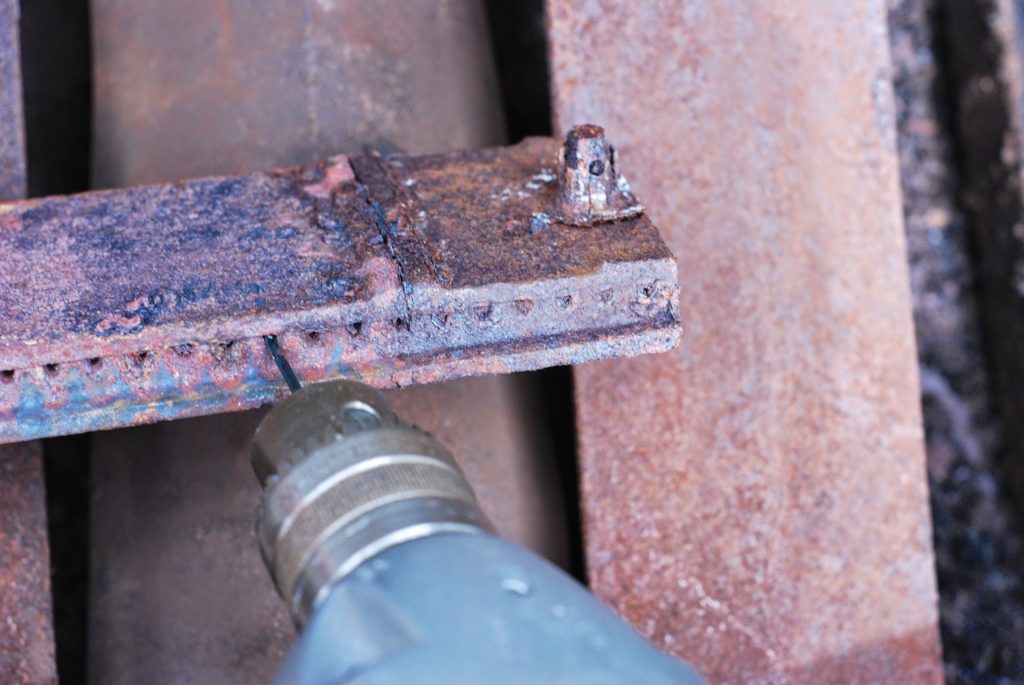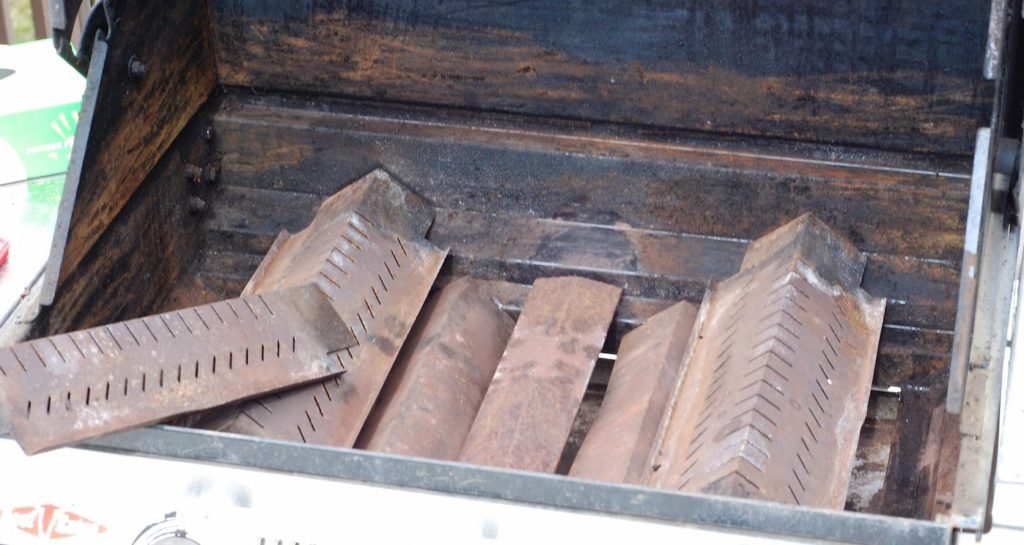Your gas grill needs a little love! It’s always there for you rain, snow or shine; a little tune-up once a season isn’t really that much to ask. Recently it took my buddy an entire fire extinguisher to put out a raging grease fire in his grill. His $50 worth of steaks were destroyed but on the good side, he didn’t burn his house down! Please share this blog with fellow foodies, it could save a life or you can also go online and check out sites like https://firebarrierexperts.com/what-causes-transformer-explosions-and-burns/ to avoid any of this to happen or additional info on what to do when times like this occurs.
 |
| Take good care of your grill and it will work better and last longer. |
Time for a Spring Grill Tune Up!
It’s actually pretty easy, and you’ll get much better results every time you grill. Read on for step-by-step instruction as well as tips to avoid grease build-up on your grill.
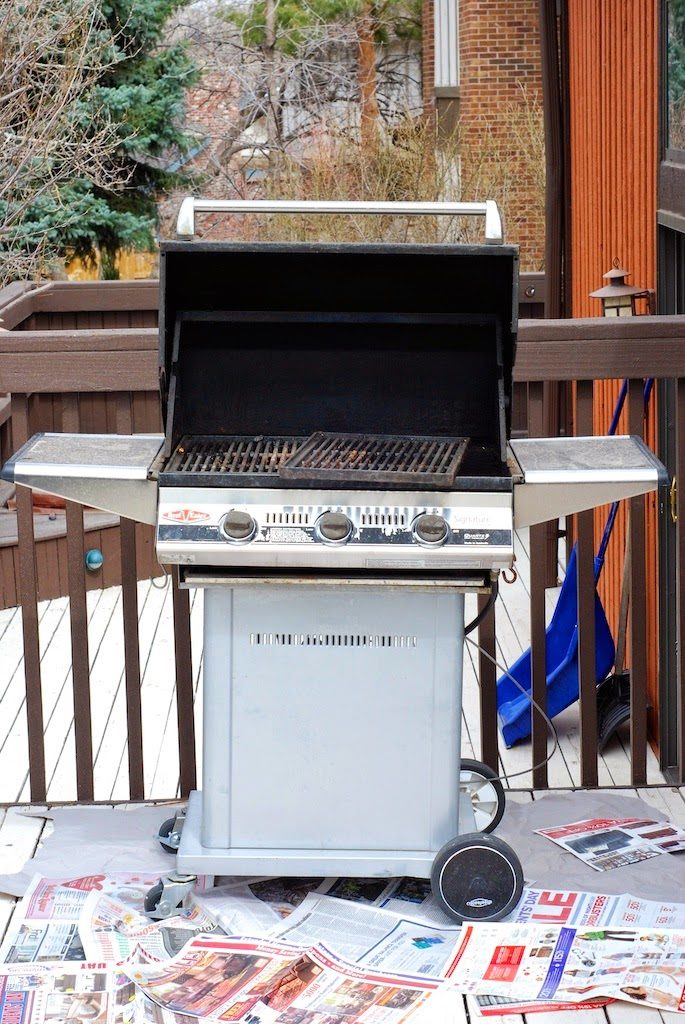 |
| The old BeefEater, I hauled this beast to do live TV every week for many, many years! |
Tools Needed
You should have most of these around the house, or could purchase all for less than $10.
– Newspaper or a drop cloth
– 1-inch Putty Knife
– 4-inch Putty Knife (optional)
– A clean Wire Brush
– Gloves
Set Up
Be sure you have all the tools needed. Start with a cold grill and spread newspapers or a drop cloth underneath – avoid the urge to move it onto the lawn or rocks, the mess will just attract critters and insects.
Before you ask – DON’T use oven cleaner! It won’t save you anytime and who wants dangerous chemicals on their grill!? I don’t even recommend hot soapy water, it just makes a mess. The goal is simply to remove excess grease and debris, not to get it as clean as new.
Start at the Top
Start cleaning at the top and work your way down, this way all the crud will end up in the drip pan. Open the lid and scrape the inside well with your putty knife; removing the built up soot, ashes and grease.
Grates, Heat Deflectors and Heating Elements
Next scrape and/or brush the cooking grates clean, remove and set them aside. Then scrape the insides of the grill well. Remove the heat deflectors, scrape, brush clean and set aside. Remove the heating elements and clean well; be sure to clear any clogged gas vents and also tap the elements (gently) to knock out any rust or debris that builds up on the inside. Set aside.
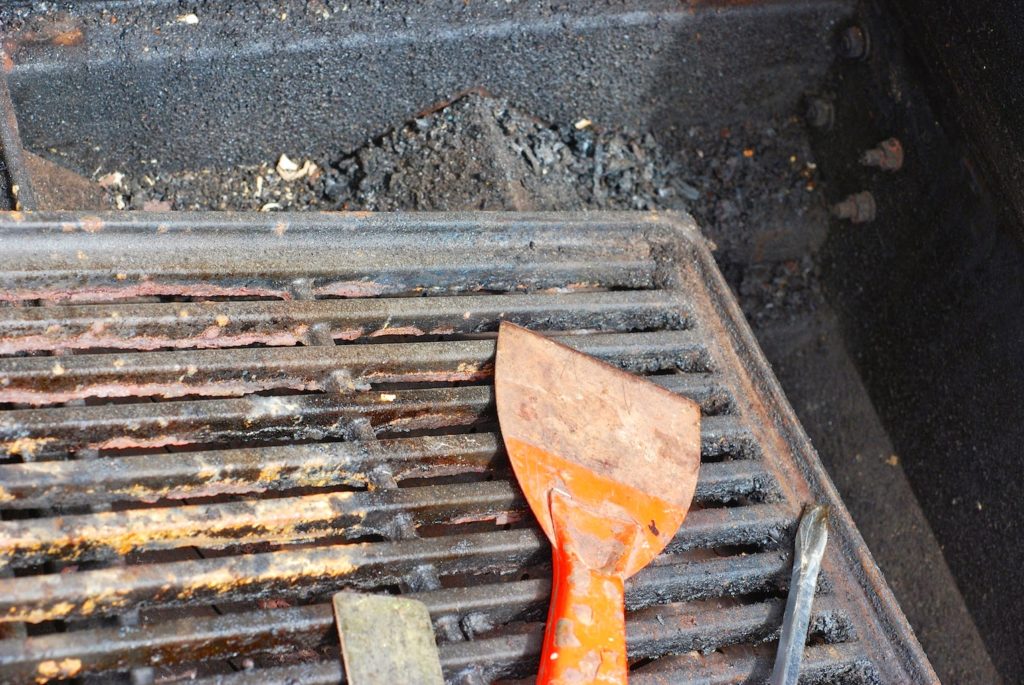 |
| Start at the top, scrape each part clean, remove and set aside as you work your way down. |
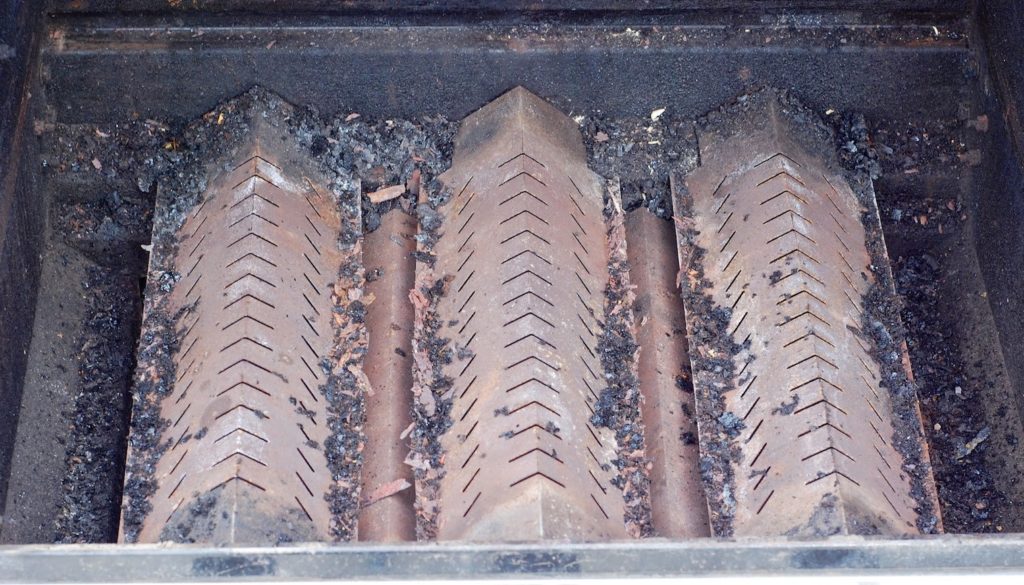 |
| This grill is hasn’t been cleaned in years so there is a lot of debris and rust, but it’s not greasy because I use the ‘In Between Cleanings’ tip below after cooking meats higher in fat. |
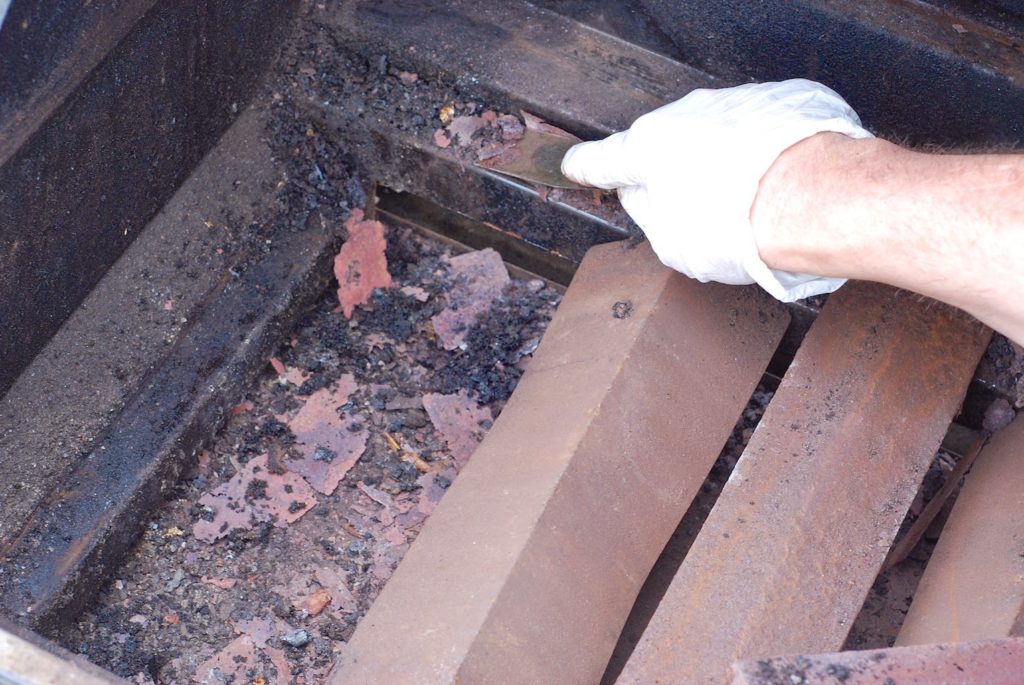 |
| Clean each part, remove and set aside on the drop cloth or newspapers. |
Clean Up The Base
Now attack the lower half of your grill – this is likely to be the worst part. Scrape all the crud loose and direct it into the drip tray. Work your way down to the bottom and dump the debris in the trash.
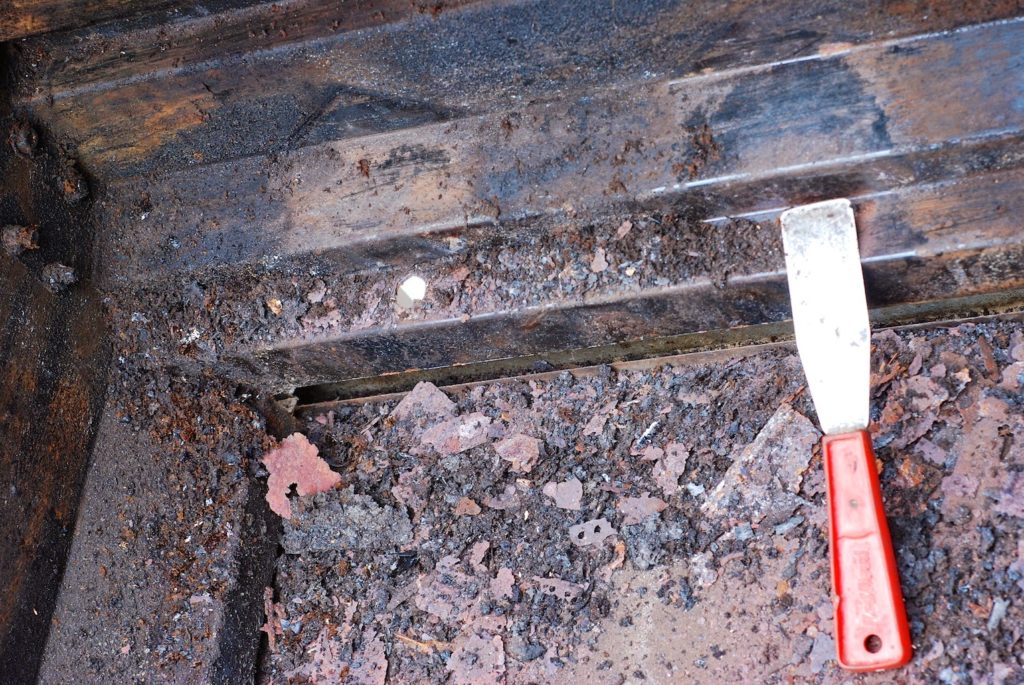 |
| Scrape all parts clean and into the drip tray. Oven cleaner or soap and water only make the job messier. |
While Your Grill is Apart
Inspect everything and consider replacing any parts that are worn, especially the gas line and regulator. This is also a good time to get out the users manual in case you need to make any adjustments, such as to the air mix vents. Also I strongly suggest upgrading to cast iron grilling grates, they do a fabulous job of browning and don’t stick like stainless steel grates do.
Reassemble Your Grill
Take your time and put everything back together, rotating the heating elements, heat deflectors and the grilling grid to a new position for even wear. Consult with your owner’s manual if you are unsure about anything – safety first!
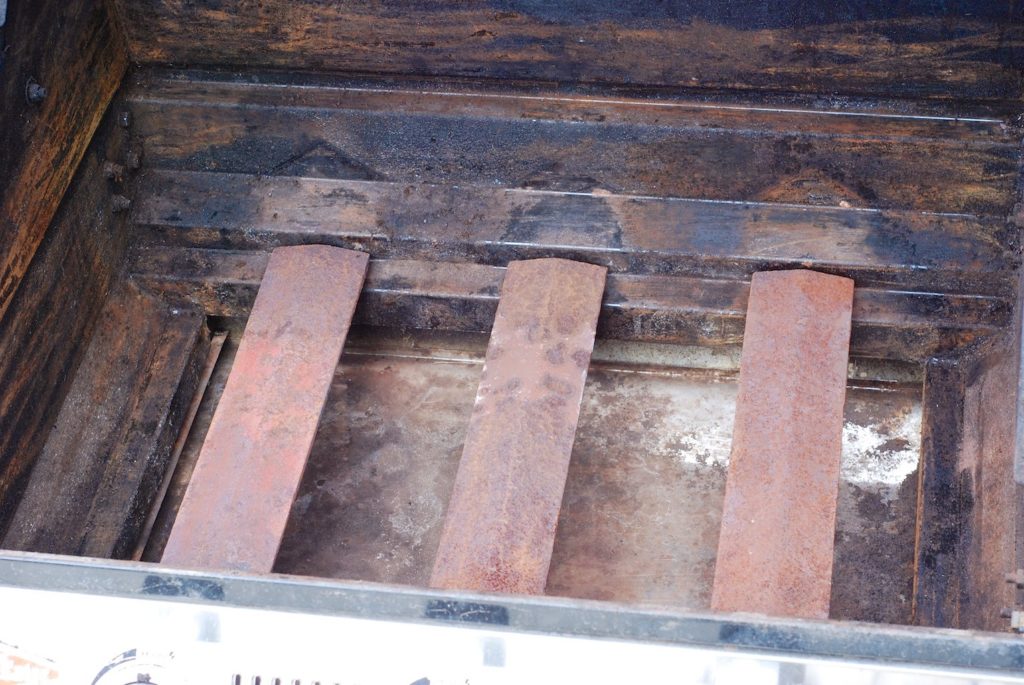 |
| All clean and the burners replaced, the goal is not to get it spanking clean, just to remove grease and debris. |
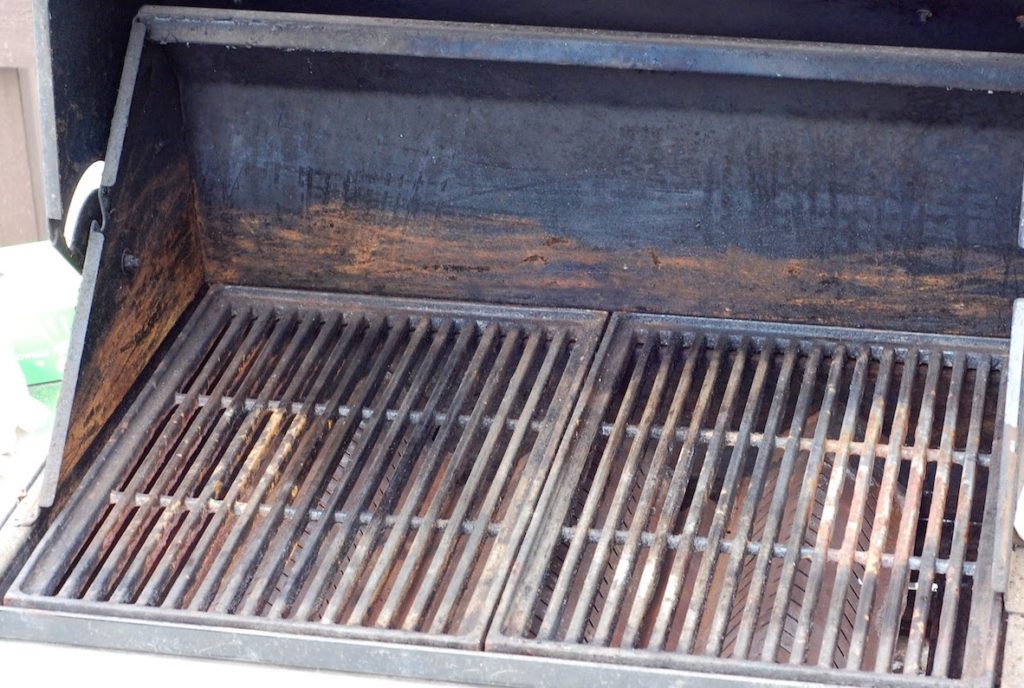 |
| All clean and ready to fire! It ain’t pretty, but this old grill has lots of good years left in it. |
Lava Rocks
I haven’t seen these in a while but if you have them, throw them away and get new ones, or get pumice stones or ceramic briquettes. Do not use rocks from around the home like river rock, they can explode. If using a porous rock, remember to stir them regularly.
In Between Cleanings
You can significantly reduce the frequency of cleanings with this simple tip. Every few uses or after cooking higher fat foods like ribs or burgers; remove your meat from the grill, turn the grill to high, set a timer for 10 minutes and let it burn off excess grease until the grill stops smoking. Definitely use the timer, it’s easy to forget and will burn up all your gas and possibly damage the grill. Do this regularly and you can often go several years in between cleanings and not have a stinky, greasy grill that attracts insects and flares up with every use.
Speaking of Accidental Fires
My boys came home with a duck egg from the creek one day and unbeknownst to me, set up a highly flammable incubator with newspaper, bed sheets and a high-intensity light from an ancient VCR recorder. Luckily I was right outside the window when the fire ignited and it’s amazing how much destruction and smoke happened in the 60-90 seconds it took me to respond with a fire extinguisher. There is no way my son could have survived if it happened while he was sleeping. How many fire extinguishers do you have in your home? It’s best to have at least one on every floor, and be sure there is one in your kitchen. Make sure everybody knows where they are and how to use them. If you have any old expired ones, use them to practice with your family, it could save a life. If you are buying new extinguishers, make sure they are rated for the combustibles in the room you plan to keep them in.
Please share this blog with fellow foodies!
Comments are closed.


